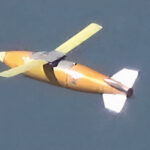The Indian Ministry of Defence is seeking automated, domestically-developed transport systems for the army.
The ministry seeks proposals for 100 robotic mules, 130 tethered drone systems, and 48 jetpack suits. All the systems must include at least 60 percent indigenous content.
Robotic Mule
The requirements for the four-legged mule include autonomous movement across various terrain, self-recovery, and obstruction avoidance capabilities.
The 60-kilogram (132 pounds) quadruped should be able to operate at up to 3,000 meters (9,842 feet) above sea level and climb stairs at least 5 inches (12.7 centimeters) high.
The camera-equipped robot should be able to walk continuously for a minimum of 3 hours and operate in a GPS-denied environment.
The mules are intended to replace animal-based logistic transport systems, considered elaborate and cumbersome.
Tethered Drone
The tethered drone system should comprise “two aerial vehicles with combined Electro-Optic/Infrared Payloads, one remote video terminal and generator set, one battery charger, one spare battery per drone, and a modular carrying case for the system.”
The drone should weigh around 15 kilograms (33 pounds) with an endurance of up to six hours in tethered mode and 40 minutes untethered. It should be deployable within 10 minutes.
The drone’s operating radius in untethered mode is specified at 5 kilometers (3 miles), with the ability to revert to the launching site in case of communication failure, tethered failure, or a low battery.
Jet Pack
The jet pack is required to fly at a speed of 50 kilometers (31 miles) per hour, carrying a weight of 80 kilograms (176 pounds) for at least eight minutes.
The pack will allow soldiers to fly swiftly across rugged terrain, enhancing operational readiness.




